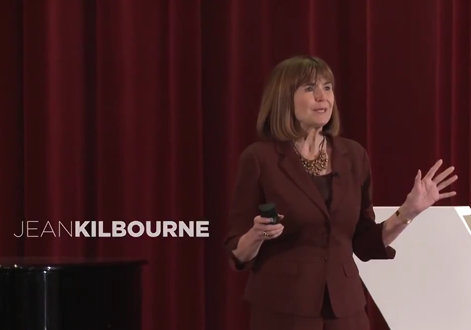 Oct. 2, 2015 Long before self-proclaimed experts flooded social media with newly minted personas and punditry, women like filmmaker Jean Kilbourne spent decades of devotion upending toxic media narratives.
Oct. 2, 2015 Long before self-proclaimed experts flooded social media with newly minted personas and punditry, women like filmmaker Jean Kilbourne spent decades of devotion upending toxic media narratives.
In an era of sound bite journalism and ‘look at me’ talking heads, culture critics like Jean Kilbourne are “the real deal” with a lifetime spent shining glaring high beams on a pop culture zeitgeist dedicated to profit over public health damaging wellness multi-fold.
This weekend, (cue wild applause!) Jean Kilbourne will be inducted into the 2015 Women’s Hall of Fame, properly placing her accomplishments alongside a slate of luminaries, from Pulitzer Prize winners like Gwendolyn Brooks and Pearl S. Buck to arts, entertainment, politics and strong STEM/fem folks including Bella Abzug, Madeline Albright, Maya Angelou, Susan B. Anthony, Virginia Apgar, Ella Baker, Lucille Ball, and Clara Barton just to name a handful scanning the “As and Bs” of this prestigious alphabet soup!
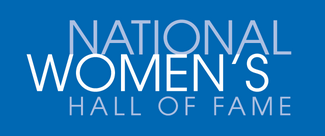 The “women of the hall” are an inspiring resource, teaching tool, and empowering collection of influencers showcased in one searchable hub, bringing history to life and celebrating present day leaders for their achievements and legacies impacting women’s lives.
The “women of the hall” are an inspiring resource, teaching tool, and empowering collection of influencers showcased in one searchable hub, bringing history to life and celebrating present day leaders for their achievements and legacies impacting women’s lives.
Today I’m honored to shoutout accolades from the highest Twitter top hoping they echo and reverberate throughout global social media spheres, as Jean Kilbourne hails from a generation unaccustomed to backpatting bluster and self-aggrandizing, and on a personal level of graciousness, it’s not in her DNA to do so.
In an era where people become famous without doing much of anything, worshiping at the altar of celebrity for coinage and consumption, it’s refreshing to see the level of distinction earned by “sheroes” like Jean Kilbourne and the “women of the hall” spotlighting key crusades in civil rights, science, health, technology and the arts.
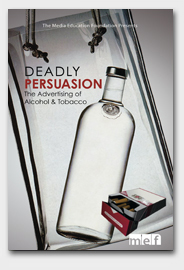 These days the well-worn pathways to take on the behemoths of big pharma, tobacco, alcohol and the ad industry itself are well traveled, smoothly paved with petitions, crowdsourcing and igniting social media sparks and fires…But I have an extra salute of respect for pioneers like Jean Kilbourne whose advocacy and activism of earlier days was a much more rugged frontier.
These days the well-worn pathways to take on the behemoths of big pharma, tobacco, alcohol and the ad industry itself are well traveled, smoothly paved with petitions, crowdsourcing and igniting social media sparks and fires…But I have an extra salute of respect for pioneers like Jean Kilbourne whose advocacy and activism of earlier days was a much more rugged frontier.
After all, Jean Kilbourne didn’t have Twitter back then…She had to whack through the tangled media weeds with a machete to access the initial raw process of critical thinking, questioning the creative imagery and subliminal messaging and use the academic tools of the day, presentations, slides, and her prolific documentary filmmaking lens to spread the word through college campuses and scholarly media literacy efforts.
When I went to the premiere of the Merchants of Doubt film about how tobacco firms strategically seeded spin doctors in an effort to control the national narrative (and Congressional power brokers) I couldn’t help but harken back to Jean Kilbourne’s earlier film legacies, including Pack of Lies about tobacco ads, her documentary Deadly Persuasion adding alcohol to the tobacco analysis, and of course the binge drinking imagery and sloppy sidewinders lobbed into the media mix about campus life depicted in her film Spin the Bottle.
She contributed to immense progress in campus cultures empowering youth to see how they’ve been “played” and though vast public health strides have taken place noting adolescent tobacco use is at its lowest level in 22 years, it’s like playing a “whackamole” arcade game watching corporations eke out new ways to target teens, with the rise of “e-cigs,” vaping, and candy-flavored nicotine making headline news.
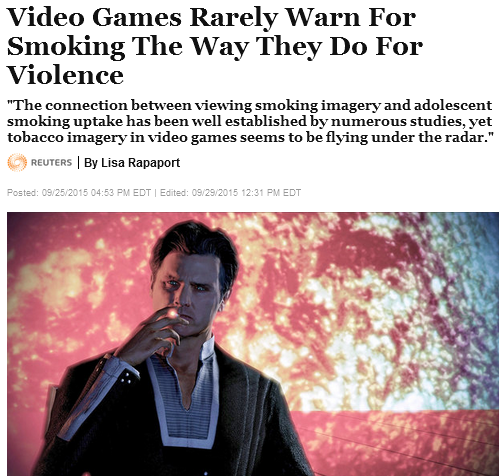 I hope to do a follow up interview with Jean Kilbourne after the Hall of Fame induction to help connect the dots on how big tobacco now OWNS many of those companies, and also get her reaction to new trends embedding unhealthy cues under the radar with zero regard for youth wellness.
I hope to do a follow up interview with Jean Kilbourne after the Hall of Fame induction to help connect the dots on how big tobacco now OWNS many of those companies, and also get her reaction to new trends embedding unhealthy cues under the radar with zero regard for youth wellness.
Take a peek at Reuter’s piece by Lisa Rapaport about the new US study finding 42% of video games used tobacco imagery while flying under the radar of health officials, parents, and the ESRB ratings board. (a well-researched connection exists between viewing smoking in media and adolescent smoking uptake)
That said, one of Jean’s most gracious points in her TED talk speaks to the vast progress in no longer flying solo and having multitudes of media mavens joining the culture jamming for healthier messaging, calling out the repeat offenders and perpetrators who have consistently and cynically stalked youth vulnerabilities with zero regard for physical or mental health. She gives us hope, promise…and grounded context.
It’s no surprise then, that when I grinned with a fist pumping “YES!” to applaud comedian John Oliver’s brilliant video ripping on tobacco’s duplicitous overseas targeting of youth, I couldn’t help but think Jean Kilbourne’s name should be somewhere in the credits as she’s been lighting fires under big tobacco to snuff out their deception and abuse of power for decades.
John Oliver’s viral video is “must see media” on YouTube as he lambasts the litigious Philip Morris tactics in a searing expose with viral appeal, complete with a cartoon mascot of a diseased lung, a mission driven anti-Marlboro cause-marketing primer, social media slogans and even a “Jeff We Can” hashtag!
For Jean Kilbourne, it must be gratifying to see the baton pass to the new age of social media late night talk show snark, translating a new era of activism and satire into snippets and sound bites to ‘go viral’ with buzzworthy quick clip Vine and Snapchat style.
As we walk through today’s media landscape, evaluating whether we’re moving “one step forward or two steps back” we should ALWAYS remember those who have championed change for years prior. Jean Kilbourne is one of them.
Even in my own work over the past decade lobbying for healthier horizons here at ShapingYouth, I see my own firebrand passionista posts shares the influence of Jean Kilbourne, calling out ethically bankrupt corporations hellbent on marketing tobacco and alcohol to kids, Photoshopping body image perfection, sexualizing young girls and presenting a pornified view of raunch culture being normalized into psyches of preteens, polluting self-worth and often imploding as larger public health problems in the form of adolescent depression and substance abuse.
Some of my earliest posts draw on Jean Kilbourne’s pioneering work calling out tobacco and alcohol targeting girls in a cynical gender ploy using ‘pink think’ playbooks and new products like “dissolvable nicotine orbs” to continue to hook ‘em while they’re young:
Pink Dreams Turns To Ashes: Tobacco Goes for the Girls
Joe Camel Meets Pink Think: Will The FDA Rule?
Like Taking Candy from a Baby: Camel Trots Out Nicotine Tricks (Again)Then there’s the alcohol marketing targeting kids in nefariously ludicrous new ways, like when industry decided to blend energy drinks with alcohol in a one two punch of reckless endangerment smack dab in the crosshairs of teens…or when industry thought it was clever to send drug dealer cues to kids with candy and sugar and Cocaine in a can.
Here are a few more throwback posts from the archives that show how much Jean Kilbourne has influenced me in calling out corporate cruddy cues to kids in an attempt to be ‘clever’ and creative with a reading of ZERO on the ethical compass in terms of how drug dealing cues impact youth in the public health sphere.
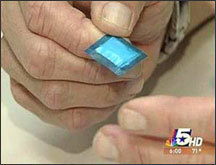 Corporate Blunders Are A Dime Bag A Dozen
Corporate Blunders Are A Dime Bag A Dozen
Junk Food Branding Hits the Drug Dealing World
Caffeine candy: Starbucks, Buzz Bites & Snickers Charged
Clearly Jean’s body of work is not only housed on her site, in her TED talks and distributed via Media Education Foundation, it surfaces every day in my own proclivity to poke, prod and implore critical thinking about media’s impact on wellness.
Harkening back to my first interview with Jean Kilbourne when she wrote So Sexy So Soon back in 2009, I recapped how we first met in 2008, why it mattered, and how her work has influenced my own focus on media’s impact on youth (upcoming in part 2 this is self-evident with media sexualization of women and girls in her TED talk, The Dangerous Ways Ads See Women and her film series Killing Us Softly)
What I wrote back then still stands, “Pioneers like Jean Kilbourne and Diane Levin have been pounding these shores for a ‘sea change’ for decades, largely talking into a conch shell awash in mega-spending by marketers. But the tide IS turning… When Spielberg himself rants on the amount of kids’ gaming violence, Geena Davis leads the way in gender equity, Amy Poehler launches Smart Girls at the Party TV, and Hollywood heavy hitters lend their clout to begin to Do Something not just be short-term PR poseurs…then we’re inching toward systemic change.”
That was half a dozen years ago, and the change is still coming, thanks to the public health focus of leaders like Jean Kilbourne who flipped adversity on its ear and made it her life’s work to enlighten and inform others on the impact of tobacco and alcohol advertising as it morphs and seeps into new digital crevices targeting youth.
 In part two, we’ll focus on Jean Kilbourne’s TED talk and highly successful Killing Us Softly series that snapped open the eyes of audiences across the world, inspiring the next generation of talented filmmakers like Elena Rossini to tackle the globalization of beauty in the new documentary The Illusionists where the camera is turned on Jean Kilbourne herself to share her own experiences as a model, activist, and culture critic shining bright as an academic rockstar. (Full disclaimer, I’m a backer an adviser on the film)
In part two, we’ll focus on Jean Kilbourne’s TED talk and highly successful Killing Us Softly series that snapped open the eyes of audiences across the world, inspiring the next generation of talented filmmakers like Elena Rossini to tackle the globalization of beauty in the new documentary The Illusionists where the camera is turned on Jean Kilbourne herself to share her own experiences as a model, activist, and culture critic shining bright as an academic rockstar. (Full disclaimer, I’m a backer an adviser on the film)
Today we’re reprinting with permission and in-depth interview to learn more about Jean Kilbourne’s amazing work lighting up the tobacco and alcohol industry, with a fist pump cheer for her recognition as a permanent addition to the prestigious Women’s Hall of Fame.
Thank you, Jean Kilbourne, for leading the way so others won’t follow like “sheeple”…for instilling media literacy and a “question authority” lens to the narratives and images on multiple screens, ambient ads and media messages enveloping the planet in surround sound.
Reprinted with permission from Counselor magazine; White, W. L. (2014). Taking on alcohol, pharmaceutical, and tobacco advertising: An interview with Jean Kilbourne, EdD. Counselor, 15(4), 54-9. From the author, William L. White, “I first heard Dr. Jean Kilbourne speak at a National Council on Alcoholism and Drug Dependence (NCADD) meeting in Kansas City many years ago. I can still recall the power of this presentation and the images she used to illustrate the tactics and messages used to promote alcohol, tobacco, and psychoactive prescription drugs. It was one of those presentations you walk away from never looking again at the world in the same way.”
Jean Kilbourne: Public Health Advocate, Media Scholar
Counselor Magazine/Bill White: For more than four decades you have pursued a professional career focus—a blended role of media analyst, lecturer, author, filmmaker, and public health advocate—that did not exist before you created it. How did the portrayal of women in media advertising first capture your attention?
 Jean Kilbourne: Let me start at the very beginning. In 1968, I saw an ad that changed my life. At the time, I had a series of very mindless jobs. I graduated from Wellesley College in 1964 and had to go to secretarial school right afterwards in order to get a job. A few years later I had a job placing ads in the British medical journal the Lancet. One of the ads was for a birth control pill called “Ovulen 21.” The ad said, “Ovulen 21 works the way a woman thinks—by weekdays, not by cycle days.” Basically, the ad was saying that women were too stupid to remember our cycles, but we could remember the days of the week. To help us, there was a smiling photograph of a woman in the ad and there were seven boxes in her head, one for each day of the week. So, Monday was a laundry basket, Tuesday was an iron, that kind of thing. I looked at this and I thought, “There’s something really wrong with this.” I took it home and I put it on my refrigerator.
Jean Kilbourne: Let me start at the very beginning. In 1968, I saw an ad that changed my life. At the time, I had a series of very mindless jobs. I graduated from Wellesley College in 1964 and had to go to secretarial school right afterwards in order to get a job. A few years later I had a job placing ads in the British medical journal the Lancet. One of the ads was for a birth control pill called “Ovulen 21.” The ad said, “Ovulen 21 works the way a woman thinks—by weekdays, not by cycle days.” Basically, the ad was saying that women were too stupid to remember our cycles, but we could remember the days of the week. To help us, there was a smiling photograph of a woman in the ad and there were seven boxes in her head, one for each day of the week. So, Monday was a laundry basket, Tuesday was an iron, that kind of thing. I looked at this and I thought, “There’s something really wrong with this.” I took it home and I put it on my refrigerator.
Then I began to look at other ads and to collect them. I put them up with magnets on my refrigerator and started to see a pattern in the images. In those days, nobody else was looking at advertising in this way. I think everyone felt that advertising was stupid and trivial and that we had many more important things to deal with. As far as I know, I was the first person to do this in any kind of systematic way. I continued collecting the ads and got a camera and a copy stand and made slides out of them. Then I put together a slideshow and began to show it to people. One thing led to another. I didn’t intend to have this be my life’s work, but that is what happened.
Counselor Magazine/BW: Did you have a sense early on that this was part of your personal destiny?
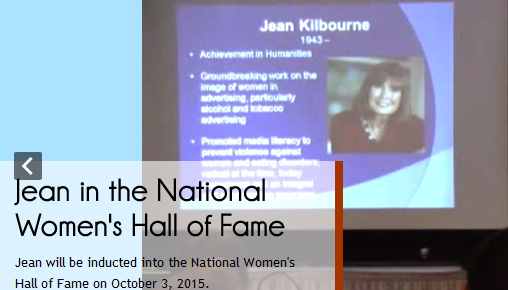 Jean Kilbourne: Yes. I would say that happened very quickly. I was involved in the beginning of the second wave of the women’s movement at that time. I’d also had some experience as a model. Job opportunities for women in those days were very limited. I could be a secretary or a waitress or maybe a teacher if I went back to school. Those were all very low-paying jobs, but I could also be a model and make a thousand dollars a day, which in those days was big money and still isn’t at all bad! I experienced a lot of pressure to capitalize on the way that I looked at that time and to do some modeling. I did some photographic modeling. I did a little bit of runway modeling for the fashion designer Oleg Cassini in New York City. I did a little bit when I lived in London and Paris. It was very soul-destroying. There wasn’t any language in those days to describe feeling objectified. A woman was supposed to simply be grateful for the attention, but it didn’t feel good to me.
Jean Kilbourne: Yes. I would say that happened very quickly. I was involved in the beginning of the second wave of the women’s movement at that time. I’d also had some experience as a model. Job opportunities for women in those days were very limited. I could be a secretary or a waitress or maybe a teacher if I went back to school. Those were all very low-paying jobs, but I could also be a model and make a thousand dollars a day, which in those days was big money and still isn’t at all bad! I experienced a lot of pressure to capitalize on the way that I looked at that time and to do some modeling. I did some photographic modeling. I did a little bit of runway modeling for the fashion designer Oleg Cassini in New York City. I did a little bit when I lived in London and Paris. It was very soul-destroying. There wasn’t any language in those days to describe feeling objectified. A woman was supposed to simply be grateful for the attention, but it didn’t feel good to me.
There was also a huge amount of sexual harassment that came with the territory. So I would sort of dabble in the modeling and then I’d step back and I’d get a job as a waitress. I knew I wasn’t going to try to make a career out of modeling. Whether I could have or not, I don’t know, but I decided not to do that. Though, it left me with a life-long interest in the whole idea of what beauty is, what it means, who wins, who loses, and why the image is so powerful.
Those were the kinds of questions that drew me in as I looked at the images in these ads I was collecting. With my own experience of being turned into an object and how that felt, I was very aware of the fact that this attention was going to be very short-lived—that to be a beautiful young woman was somewhat like being very rich, but with the absolute assurance that you would someday be bankrupt. I could see that happening all around me. As women aged out, which in those days was hitting thirty, they were often treated with contempt. Or, at the very least, they became invisible.
In 1969, I decided to become a teacher and I went back to school. I got a master’s degree and I taught at a suburban high school for three years and then I taught at Emerson College in Boston for three years. It was during that time that I really started using the slides of the ads that I’d collected. I had put together a slide presentation that I called “The Naked Truth: Advertising’s Image of Women.” It was very powerful when I used it in my classes. The students loved it. They had never thought of any of this before and it forced them to look at things in a very different way.
So I knew that I was onto something, but it took me quite a while to really make it my career. There were a couple of reasons for that. One is that I had a real terror of public speaking. I was always a good public speaker, but I was just so terrified of it. However, I had something I really wanted to say. So I just did it and, as with anything, eventually it became much easier.
The other thing that really coincided with my deciding to make this a career was that I quit drinking in the spring of 1976. It was soon thereafter that I got an agent and started to give the slide presentations all around the country. Sobriety gave me energy and it gave me confidence and a sense of possibility. I hadn’t had any of that before.
This is also one of the reasons why I’ve been so concerned for so many decades about alcohol and alcoholism, particularly as they affect women. I saw what happened to me—all this potential was being drowned. I was a very high-functioning alcoholic, but nonetheless I was running on one cylinder. My sobriety helped launch my career and my feeling that this was what I wanted to do.
Counselor Magazine/BW: When did your work begin to focus on alcohol, tobacco, and pharmaceutical advertising?
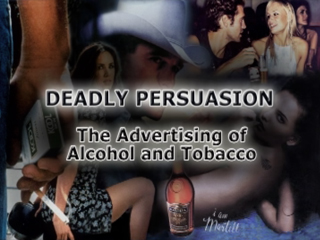 Jean Kilbourne: In the 1970s, I started to look at alcohol and tobacco advertising and I developed slide presentations on these topics. So I had presentations on the image of women in advertising and on alcohol and tobacco advertising. Students generally responded very positively to the presentations because the information was all so new to them. I also use a lot of humor in my presentations and they weren’t expecting that. I think they were grateful that they weren’t being harangued and that instead I was encouraging them to ridicule and to laugh at these ads.
Jean Kilbourne: In the 1970s, I started to look at alcohol and tobacco advertising and I developed slide presentations on these topics. So I had presentations on the image of women in advertising and on alcohol and tobacco advertising. Students generally responded very positively to the presentations because the information was all so new to them. I also use a lot of humor in my presentations and they weren’t expecting that. I think they were grateful that they weren’t being harangued and that instead I was encouraging them to ridicule and to laugh at these ads.
I was using a very different angle than what was traditionally used for alcohol and tobacco education in those days. The emphasis had always been on how bad this stuff was for you and how it might kill you, none of which I felt was going to make very much difference to a teenager. I started smoking when I was thirteen and if someone had said to me, “You’ll be dead by the time you’re fifty,” I would‘ve said, “Good. Who wants to live to be that old?” If they showed me pictures of a diseased lung, I wouldn’t have cared either because I wouldn’t have thought of that as applying to me.
So I think my big insight during the ‘70s was that the way to reach kids wasn’t to talk about mortality or illness but rather to show them that they were being manipulated and how this was being done. I used media literacy to suggest that the real authorities that they should be rebelling against were Phillip Morris and Anheuser Busch, not their parents or their health educators or their teachers. I wanted them to be angry at the right targets. Gradually this became standard practice so that now media literacy is a part of virtually every kind of prevention program, but it really wasn’t then.
Counselor Magazine/BW: Media researcher George Gerbner described your presentations as a “form of mass vaccination” against manipulative media advertising and I think I actually experienced this after the first time I saw you present. I have never been able to look at advertisements the same.
Jean Kilbourne: You know, I loved that comment of George Gerbner’s and I loved George Gerbner. He was a really important person to me. He was extraordinarily supportive when I was just starting out and was a wonderful mentor. That is a great quote from him.
Counselor Magazine/BW: How consciously were you trying to “vaccinate” people?
Jean Kilbourne: Not very. I was trying to get people to take advertising seriously because very few people did and this is still the case. I always hear people say, “I don’t pay attention to ads. I just tune them out. They have no effect on me.” So I wanted people to take it seriously. More importantly, I wanted them to take these issues seriously—the sexism, the high-risk drinking, and the dangers of tobacco—and to see these as serious issues fueled by advertising. I wanted them to see past the harm and look at the profits these industries were making and how they were making them.
Counselor Magazine/BW: You once described the work you do as a “form of judo.” Could you elaborate on what you mean by that?
Jean Kilbourne: What I meant when I described it as judo is that I was taking on these huge industries—the alcohol industry, the tobacco industry, the fashion industry, the beauty industry, the diet industry, the junk food industry. They had huge resources and huge amounts of power and control of the media through their advertising dollars. And here I am, this lone woman and her slideshow. There was no way I was going to have resources that even remotely approached those wielded by these companies, but what I could do was use their own weight against them. I could use their material, their ads, and flip it so that people would look at them from a different point of view, a different perspective. That’s what I meant when I said it was a kind of judo.
Counselor Magazine/BW: What are your most vivid recollections of trying to convey your work to mass audiences through television shows and interviews?
Jean Kilbourne: I remember that at first it was terrifying. When I talked earlier about being afraid of public speaking, it was like every step I would overcome, there’d be another level. In the beginning, it was just being able to get up in front of a group of people and be able to speak and not be shaking. Then I got comfortable doing that. Then it was larger groups and I eventually got comfortable doing that, and then it was television, which was really scary in the beginning, particularly national television. The first national show that I did was The Today Show in the late 1970s. I was just incredibly nervous and my oldest brother said, “Well, relax, Jean. The worst that can happen is you’ll disgrace yourself in front of twenty million people.” Which was very typical of my brother, but then of course it’s also true.
It was easier in those days to be on television because people didn’t have recorders and you were on and then you were off. Today people can analyze what you said, put it on YouTube, criticize your clothing, and do all kinds of stuff that they weren’t able to do in those days. I was interviewed by Jane Pauley and it was great exposure, and then I did a lot more shows and finally was on The Oprah Winfrey Show. That was a whole other level of reaching people. I felt like all of the shows were a terrific way to get the message out to millions of people. I could be traipsing around the country for another five lifetimes and not be able to reach the numbers of people that I did just doing one of those shows.
I also did a lot of radio, which I actually prefer to television. With radio you can get into a lot more depth and it’s a more thoughtful medium. You also don’t have to care about how you look! Preparing for television takes up a huge amount of time, particularly for women, because we know we’re going to be judged at least partly by how we look
Alcohol and Tobacco Advertising
Counselor Magazine/BW: You know, I’d like to explore the whole issue of women, addiction, and advertising a bit more in depth and I’m wondering if we could start by having you give some examples of some of the themes you found within alcohol and tobacco ads targeting women.
Jean Kilbourne: When I first started looking at alcohol ads, I realized with absolute horror that the alcohol industry understood alcoholism better than any other group. They really got it. They understood addiction in general, but they certainly understood alcoholism. One of the things they understood was the core of loneliness that is at the heart of all addictions. Even if one doesn’t start out lonely, to be an addict is to end up lonely. They were playing on that in the ads by offering the bottle as the friend and as the lover.
Alcohol ads encourage people to feel that they are in a relationship with alcohol, which is, of course, how alcoholics feel. I used to joke that Jack Daniels was my most constant lover, and that Jack Daniels wouldn’t let me down. So they were on to this. Of course, they also use sex to sell alcohol to both women and men. Alcohol ads are often about how the bottle will help a man have sex or have better sex or that the bottle itself will be the lover and partner, metaphorically speaking. For women, the pitch is more about romance and intimacy. Alcohol ads often show a couple in a romantic setting with this wonderful amber light around them, as if by drinking you could get into this cozy situation. This was part of what was done and still is in alcohol ads targeting women.
But there were so many other things, too. Marian Sandmaier published her wonderful book The Invisible Alcoholics, which I believe was the first book about women and alcoholism, in 1980. It was a very powerful book that resonated with me. She wrote that in our culture high-risk drinking is seen as making men more masculine but as making women less feminine. Women alcoholics are especially seen as less feminine. There is such a powerful stigma against female alcoholics. So the alcohol ads hyper-feminize women in order to offset this. The ads use beautiful, young women to convey to other women that this sophisticated drink will make them look like these women. The alcohol advertisers have really done their homework. They understand how addiction works and, in particular, how addiction works with women. The same thing is done with cigarette advertising—portraying the cigarette as a friend, a constant companion.
Counselor Magazine/BW: Do you see a relationship between this targeting of women by the alcohol and tobacco industries and the dramatic growth of alcohol and tobacco addiction among women over the course of the twentieth century?
Jean Kilbourne: Absolutely. One of the things that happened was that the alcohol industry began targeting women more and more directly, in part because they had to constantly open up new markets. Of course, they continued to target men, but they wanted to get women to drink more because that was such a huge potential market. So they did and continue to do all kinds of advertising that makes drinking seem sophisticated and feminine and romantic. It parallels what the tobacco industry did in promoting cigarettes to women in the twenties and thirties when smoking was still not really acceptable for women. The tobacco industry promoted smoking as something that was not only acceptable but was also daring and a symbol of liberation; they did this with tremendous success.
Counselor Magazine/BW: I’m thinking of this long line of tobacco and alcohol products that were developed specifically for women.
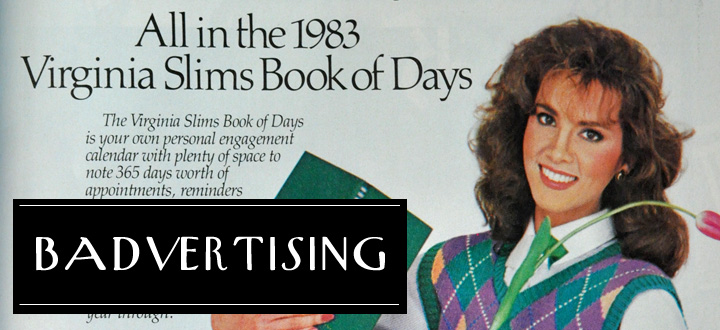 Jean Kilbourne: Yes, like Virginia Slims. Now the alcohol industry has developed this whole line of very sweet drinks for kids that bridge the gap between soft drinks and alcohol. They target girls most often because most boys wouldn’t be caught dead drinking these feminized drinks because of the hyper-masculine code that is so often such a straitjacket for boys. Girls are offered things like chocolate beer, tequila lollipops, ice cream with alcohol, and Jello with alcohol. The alcohol industry calls these drinks “entry drinks” because they’re designed to get girls used to drinking alcohol. One of the dangers of these products is that they’re so sweet one can miss the fact that they contain a lot of alcohol. Girls tend to weigh less than boys and so there’s been a lot of trouble with girls drinking way too much of this stuff and then getting alcohol poisoning.
Jean Kilbourne: Yes, like Virginia Slims. Now the alcohol industry has developed this whole line of very sweet drinks for kids that bridge the gap between soft drinks and alcohol. They target girls most often because most boys wouldn’t be caught dead drinking these feminized drinks because of the hyper-masculine code that is so often such a straitjacket for boys. Girls are offered things like chocolate beer, tequila lollipops, ice cream with alcohol, and Jello with alcohol. The alcohol industry calls these drinks “entry drinks” because they’re designed to get girls used to drinking alcohol. One of the dangers of these products is that they’re so sweet one can miss the fact that they contain a lot of alcohol. Girls tend to weigh less than boys and so there’s been a lot of trouble with girls drinking way too much of this stuff and then getting alcohol poisoning.
Counselor Magazine/BW: I’m wondering if through the course of your studies whether you’ve had an opportunity to reflect on how the media portrays addicted and recovering women.
Jean Kilbourne: Addicted women have been portrayed forever as sexually promiscuous and bad mothers, but I can’t recall many images of women in addiction recovery.
Counselor Magazine/BW:Maybe the absence of recovering women is the story.
Jean Kilbourne: Maybe that is the story, you’re right. There aren’t very many portrayals of women in recovery, although there are more than there used to be. On television there have been far more men who are in recovery than women in recovery. I believe that Christine Cagney in Cagney and Lacey was the first. Jane Tennison in Prime Suspect gets sober at the end of the series. There have been some movies, of course, such as The Morning After and 28 Days.
Counselor Magazine/BW: I’m wondering if you’ve got a particular slant on alcohol advertising as a woman in recovery. Do you think women in addiction treatment need to be inoculated against the effects of the advertising you have described?
Jean Kilbourne: Oh, I actually think men and women both need to be inoculated against it. The research being done today by alcohol and tobacco marketers is far more sophisticated than it was when I started looking at these ads. Now they’re very aware of psychological cues and what sort of things trigger relapses in addiction; things like the flare of a match as you’re lighting a cigarette or the amber light in the alcohol ads. I remember from my own drinking days that it was like stepping into this cave of amber light and so I think that’s a psychological cue, as is the foam on the head of beer in a beer ad. These are the kinds of cues that can trigger relapses and they’re meant to—that’s the whole point. This is why both men and women need to have media literacy be a part of their treatment because they’re going to be going out into a world in which they will be bombarded with these beckoning cues to have a drink or a cigarette.
Counselor Magazine/BW: Are treatment programs using any of your films to do this kind of education?
Jean Kilbourne: A lot of them do. I’ve also talked about eating disorders for decades and a lot of the eating disorder treatment centers use my films Killing Us Softly and Slim Hopes: Advertising & the Obsession with Thinness.
Film Projects
Counselor Magazine/BW: Could you talk about the films?
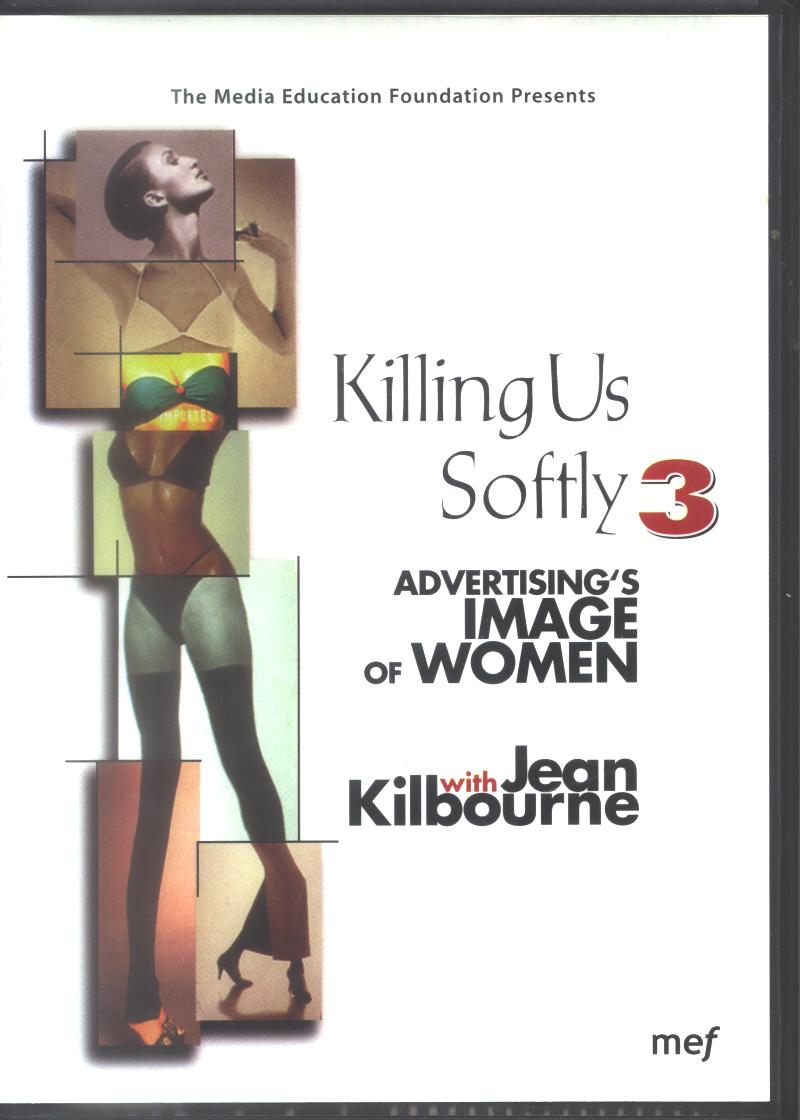 Jean Kilbourne: A huge step for me was making Killing Us Softly in 1979. That turned my lecture “The Naked Truth: Advertising’s Image of Women” into a film. The first version was unbelievably simple. It was one camera aimed at me as I gave a lecture and cost something like six thousand dollars to make. It was really cheap and cheaply made but, in today’s language, it went viral. It became a huge hit and was widely used on college campuses and lots of other places. I’ve remade it three times since then, most recently in 2010 as Killing Us Softly 4. I’ve often heard that it’s one of the most popular educational films of all times. When Upworthy recently promoted the trailer to Killing Us Softly 4 on YouTube, it had over four million hits.
Jean Kilbourne: A huge step for me was making Killing Us Softly in 1979. That turned my lecture “The Naked Truth: Advertising’s Image of Women” into a film. The first version was unbelievably simple. It was one camera aimed at me as I gave a lecture and cost something like six thousand dollars to make. It was really cheap and cheaply made but, in today’s language, it went viral. It became a huge hit and was widely used on college campuses and lots of other places. I’ve remade it three times since then, most recently in 2010 as Killing Us Softly 4. I’ve often heard that it’s one of the most popular educational films of all times. When Upworthy recently promoted the trailer to Killing Us Softly 4 on YouTube, it had over four million hits.
In 1982, I made a film called Calling the Shots: Advertising Alcohol, which I remade in 1991. I made Pack of Lies: The Advertising of Tobacco in 1992. In 2004, I combined the two into a film called Deadly Persuasion: The Advertising of Alcohol and Tobacco.
In 1995, I made Slim Hopes: Advertising & the Obsession with Thinness. In 2004, I made a film with my friend and colleague Jackson Katz called Spin the Bottle: Sex, Lies, & Alcohol, which is about drinking on college campuses. I’ve also hosted films by Neil Postman and George Gerbner. So I’ve made a wide range of films to get this information to small groups and to groups that can’t afford speakers.
Industry Response
Counselor Magazine/BW: What has been the response of the alcohol and tobacco industries to your work?
Jean Kilbourne: Their response has been nothing! But what they can do, because they have so much control over the media, is to make sure their critics don’t get very much publicity. So when Can’t Buy My Love, my first book (which was called Deadly Persuasion in hard cover) came out in 1999, the editor of a really big women’s magazine said to me, “I love your book. I’d love to do something with it but I can’t touch it because Absolut is one of our biggest sponsors.” So they don’t need to kill their critics and they don’t need to sue them, all they need to do is deny them publicity.
One of the things that the alcohol industry did do to me in the beginning, however, when I was out there alone speaking about alcohol advertising, was to label me a “neo-prohibitionist” and “Carrie Nation.” They said that I was trying to bring back prohibition, which was completely untrue and incredibly stupid, but I had to waste time addressing that whole argument instead of talking about the real issues.
Career Reflections
Counselor Magazine/BW: As you reflect back over your career to date, in which you have received so much international recognition and innumerable awards, is there an aspect of your work that you feel personally best about?
Jean Kilbourne: Well, there are a couple of things. One is I get e-mails constantly from people all around the world because of the films, particularly Killing Us Softly, telling me how my work has really opened their eyes or made a difference in their lives. I’ve had lots and lots of young women say that they never identified as feminists until they saw the film and now they do and I feel very good about that. I also occasionally hear from people who, after reading my books or seeing my films, got sober or quit smoking. What could be better than that?
Counselor Magazine/BW: Are there big items still on your agenda that you’re currently tackling or hope to tackle in the near future?
Jean Kilbourne: That’s a really good question. I’m not sure. I’m sort of at a crossroads right now. I’m still doing my lectures, but I’m not going to remake Killing Us Softly. I think four is enough! I’d like to write another book, but I’d like it to be a different kind of book, not a research-oriented book. So I’m thinking I might write a memoir about what it’s been like to be an activist all these years.
Counselor Magazine/BW: That would be wonderful, particularly as a primer for other young activists coming behind you. I’m wondering in that regard if there are others that you see coming behind you who are going to carry this work far into the future.
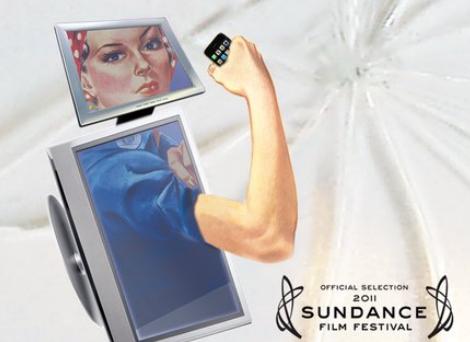 Jean Kilbourne: There are a lot of young women out there and some young men too who are doing really good work. Jennifer Siebel Newsom made a film a couple of years ago called Miss Representation. Her film is about the ways in which media images limit women’s political efficacy and make it more difficult for women to become active politically or to see themselves as politicians or even involved in politics. It’s a wonderful film.
Jean Kilbourne: There are a lot of young women out there and some young men too who are doing really good work. Jennifer Siebel Newsom made a film a couple of years ago called Miss Representation. Her film is about the ways in which media images limit women’s political efficacy and make it more difficult for women to become active politically or to see themselves as politicians or even involved in politics. It’s a wonderful film.
There’s a young woman named Jennifer Pozner, who wrote a terrific book about reality TV called Reality Bites Back. She’s a very smart writer and speaker and she’s been doing a lot too. Andrea Quijada, the executive director of the Media Literacy Project, is doing great work.  My friend Jackson Katz has been talking about images of men for over twenty years and works to get men involved in ending violence against women. Jaclyn Friedman, Jessica Valenti, and other young feminists are doing a lot of work on these issues these days.
My friend Jackson Katz has been talking about images of men for over twenty years and works to get men involved in ending violence against women. Jaclyn Friedman, Jessica Valenti, and other young feminists are doing a lot of work on these issues these days.
Amy Jussel has a terrific blog and website called “Shaping Youth.” I know I’m leaving out so many people! There’s also an organization called About Face which is all about images of women in advertising. There are many other organizations now too, such as the Brave Girls Alliance. There’s an extensive resource list on my website. So there are a lot of things going on now that give me hope that my work will continue…
Counselor Magazine/BW: What advice would you offer young people interested in pursuing this advocacy work as a career.
Jean Kilbourne: I’d encourage people to do it. It’s work that feels meaningful and I’ve just loved it. I still feel amazed that people actually pay me to talk about what I think. So, even though it can be exhausting—particularly the first decade or so when I was doing 110 lectures a year and going out on Monday and coming back on Friday—it is exciting. One has to have a lot of grit, determination, and stamina, but the rewards are terrific. I’ve also found it very important to work for myself and to be independent in that way.
Counselor Magazine/BW: You and I have both seen people take on causes they’re passionate about and then burn themselves out quickly. How have you been able to sustain your health and vitality over this long marathon you’ve run?
Jean Kilbourne: That’s a very good question! There are lots of things. I have a very strong support system of friends and I’m also a part of the recovering community, which is a huge support system. I try to take care of myself and exercise; I love to be outdoors and to walk. I would say that the main thing has been my close friendships, particularly with other women, that have been so nurturing, and my close relationship with my daughter, who is doing very exciting work herself.
Counselor Magazine/BW: Dr. Kilbourne, thank you so much for taking this time to reflect on your life and the advocacy work that you’ve pursued.
Dr. Kilbourne’s books and films are available through Jean Kilbourne.com Acknowledgements: Support for this interview series is provided by the Great Lakes Addiction Technology Transfer Center (ATTC) through a cooperative agreement from the Substance Abuse and Mental Health Services Administration (SAMHSA) Center for Substance Abuse Treatment (CSAT). The opinions expressed herein are the views of the authors and do not reflect the official position of the Department of Health and Human Services (DHHS), SAMHSA or CSAT. See more at Counselor Magazine
Stay tuned for Part Two and Congratulations Jean Kilbourne! Well deserved!
Shaping Youth’s Resource Round-Up
Teen Smoking and Tobacco Issues:
FDA Regulation of Tobacco: What YOU Can Do
Kids As Guinea Pigs: Report on Unregulated Tactics of Tobacco
American Cancer Society: Child & Teen Tobacco Use
Cancer Facts & Figures: Year by Year Snapshot
Smoking & Teens Fact Sheet (American Lung Assn)
Key State by State Statistics on Tobacco Data (chart)
CDC Smokeless Tobacco Education Materials
Smoking Teens Quickly Addicted; Long Term Health Issues
CDC Media Campaign Resource Center: FREE ads, posters, videos
Shaping Youth: Pink Dreams Turn to Ashes
Shaping Youth: Joe Camel Meets Pink Think
Shaping Youth: Industry Tactics Clueless About Blowback
Truth Campaign (“Infect the Truth” (new) youth anti-smoking coalition)
NYT: AMA On Cigarette Products in PG13 “He’s Just Not That Into You”










Speak Your Mind